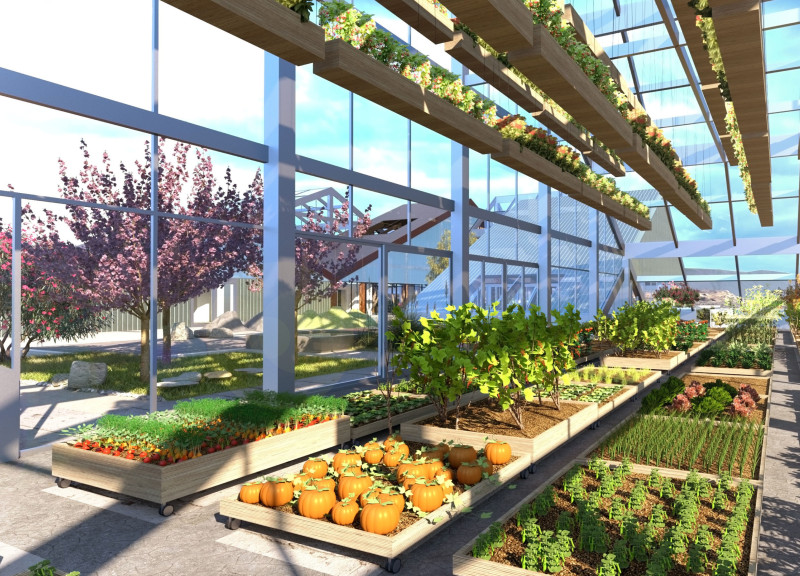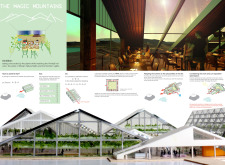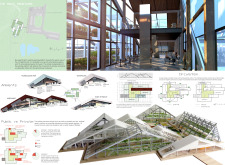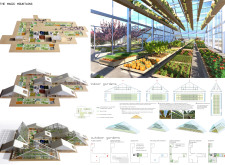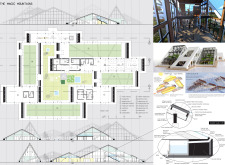5 key facts about this project
The building’s layout includes a restaurant positioned between two greenhouses, allowing diners to enjoy meals surrounded by greenery. This arrangement promotes an immersive experience, where visitors can appreciate the thriving plants while enjoying freshly prepared dishes. The integration of community spaces facilitates workshops, educational events, and social gatherings, underscoring the project's role as a local hub.
Design Integration of Nature and Agriculture
A distinctive aspect of "The Magic Mountains" lies in its seamless integration of natural elements and agricultural functionality. The large glass facades enhance visibility into the greenhouses and the surrounding landscape, allowing an abundance of natural light to permeate the space. This interplay of sight lines fosters a natural connection between the indoor environments and the external landscape, which is critical for creating an engaging visitor experience.
Sustainable design principles are evident throughout the project. The architecture utilizes solar heating systems to enhance energy efficiency and minimize environmental impact. Rainwater harvesting systems are integrated to collect and utilize water, further promoting sustainability. These features not only benefit operational functionality but also reinforce the project's commitment to environmental responsibility.
Community-Centric Spaces and Functionality
The project’s design prioritizes community engagement, with versatile multipurpose spaces that achieve multiple functions. The restaurant's layout includes areas dedicated to both culinary activities and communal gatherings. By facilitating social interaction, the design creates opportunities for visitors to learn about local agriculture and participate in events that highlight regional culture.
The careful selection of materials is also noteworthy. The extensive use of wood for structural elements provides warmth, while glass elements ensure transparency and connectivity with nature. Metal finishes enhance durability and offer a modern aesthetic that complements the organic aspects of the design. Furthermore, insulation materials and thermal bypass systems contribute to the overall efficiency and comfort of the space.
For a comprehensive understanding of the architectural design and its intricate details, exploring the architectural plans, architectural sections, and architectural designs of "The Magic Mountains" will provide deeper insights into the project's functionality and aesthetic intentions.


